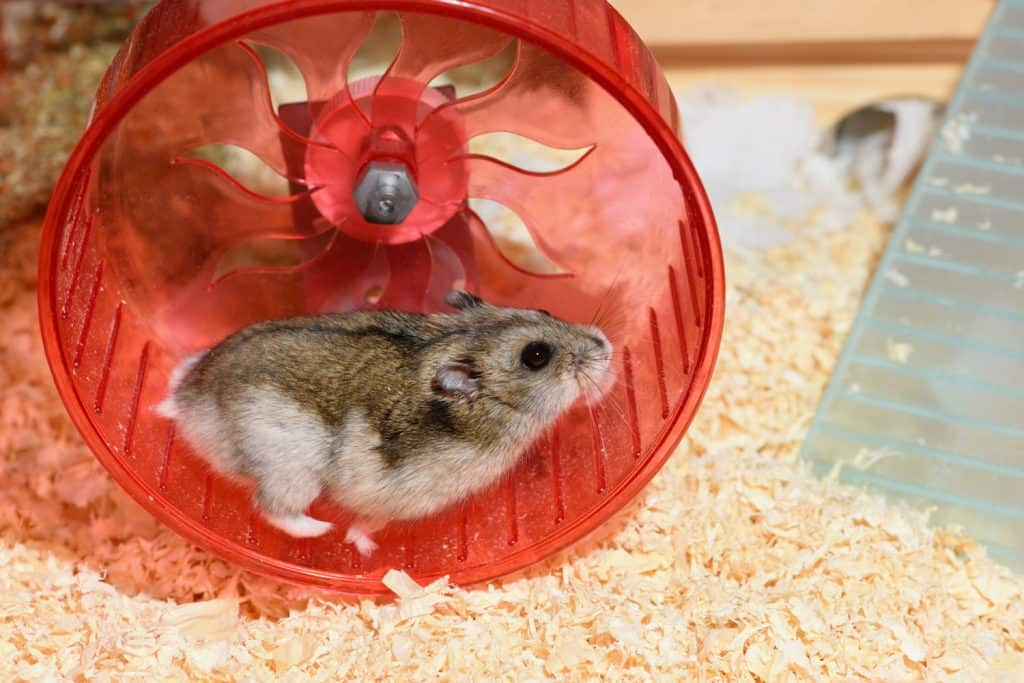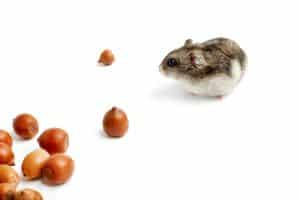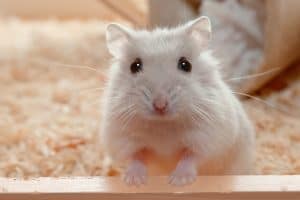When setting up your hamster's cage, you're bound to add a hamster wheel. Hamsters run a ton in the wild, so they need to exercise for them to be happy. No doubt you've seen a variety of sizes when shopping for the perfect wheel for your pet. What size wheel does a hamster need? We've done some research and have some great information for you.
The size of the hamster wheel you need will vary depending on the type of hamster you have. Hamster sizes vary, with the largest visible difference being between the Syrian and dwarf hamsters. The size will also depend on the sex of your hamster, with females tending to be larger than males. For Syrian hamsters, the wheel should be between 8-12 inches. For dwarf hamsters, the wheel should be at least 6 inches.
Now that you know the standard sizes needed to allow your hamster adequate room to run, let's go into the variables involved. Keep reading to learn more about hamster wheels, as well as get the answers to some other questions you might have.

What Should You Consider When Buying a Hamster Wheel?
Size
When it comes to hamster wheels, the bigger, the better. Hopefully, your hamster will spend much of its time running on this wheel, so you want to ensure the size is adequate and your hamster is engaged. As mentioned above, dwarf hamsters need a wheel a minimum size of 6 inches. Though you might be tempted to get a wheel of this size to leave room in their cage for other toys, opt for a larger one if space allows. Your hamster will grow, and it will save you money if you don't have to size up later.

Syrian hamsters are the largest variety of hamster. You absolutely must begin with a wheel of at least 8 inches -- more if room allows. If your Syrian hamster is female, she will likely need an even bigger wheel. Keep the gender of your hamster in mind when choosing the best wheel.
Additionally, pay mind to the width of the hamster wheel. If your hamster has a wide stance, you'll want to ensure the wheel you purchase allows it to run comfortably. Size depends on more than just the circumference of the wheel! The width of the wheel should ideally be a little wider than your hamster's body.
Style
Most hamster wheels have one side entirely open. There are hamster wheels with a covering over both sides, designed to ensure your hamster doesn't accidentally fly out of the wheel when running especially fast. These types of wheels are just fine for dwarf hamsters, but for the larger Syrian hamster, it might leave your hamster feeling confined and unable to move freely. Plus, your Syrian friend might not be able to get in and out easily.
View this hamster wheel on Amazon.
For your larger hamster, stick with a traditional wheel.
View this hamster wheel on Amazon.
Material
Though it might be tempting due to the low cost, a mesh or wire wheel is not safe for your hamster. Your hamster's foot or toes could get stuck in the mesh or gaps and become seriously injured, such as a nail being ripped off or worse. Additionally, the uneven surface could aggravate your hamster's feet. Getting a solid, lightweight construction is the best type of hamster wheel you can get.
Hamster wheels are generally steel, wood, or plastic. Hamster wheels made of wood are very durable but tend to be heavier than plastic. Invest in a wheel that will not break easily if dropped, as well as being light enough not to be exceedingly laborious for your pet to operate.
View this wooden hamster wheel on Amazon.
How Do You Know If Your Hamster's Wheel Is Too Small?
If your hamster has to arch its back to run in the hamster wheel, then the wheel is too small. Letting a hamster run with its back arched can cause your little furry buddy a great deal of pain, so upsize as soon as you notice something like this. Your hamster should have a flat back while running.

If your hamster avoids their wheel, then they likely don't feel secure or comfortable using it. Upgrade the size or shape immediately. Some hamsters are picky, and it might take a couple of tries to get the best one. Start with the biggest one possible to avoid any wasted money, all while ensuring the wheel is still light enough for your hamster to move.
Can You Take Your Hamster's Wheel Out At Night?
First and foremost, if you suspect your hamster might be pregnant, do not remove anything from their cage, let alone remove the hamster wheel. This can cause undue stress and make the hamster potentially harm her babies. If you can safely take it out early in the pregnancy, this should be fine.
Removing the hamster's wheel overnight is not the best idea. Hamsters are actually nocturnal and do much of their exercising at night. If they are left long enough without their wheel, then it could cause health problems.
If you're troubled by a squeaky wheel at night, try lubricating the wheel. If that doesn't solve the problem, try playing with your hamster before bedtime in the hopes it will sleep well. If matters don't improve, you can try to relocate your hamster's cage to a place where you won't hear the wheel at night.
What Are The Benefits Of A Hamster Wheel?
Hamsters run for miles and miles in the wild. A hamster wheel allows your pet to get its exercise in the confines of a small cage. A hamster needs this exercise to expel energy and lead a happy life.
Running helps your hamster maintain a healthy weight. Hamsters are also prone to stress, and exercise manages stress in your hamster. A hamster with no wheel tends to gnaw on its cage more because it has pent up energy and not much space to let it loose.
How Long Do Hamsters Run On Their Wheels?
Hamsters can run for what seems like ages on their wheels. In fact, most hamsters run about 5-6 miles on their wheels every day. This is the reason why it is so imperative to have a wheel suited to your hamster's size and needs.
Can Hamsters Run Too Much On A Wheel?
Hamsters can run too much on a wheel. For the most part, hamsters know their own bodies and rest if needed, but there are times when it could become too much. If they become addicted, they could actually develop sores and blisters on their feet. For a mother hamster, they could neglect their babies, resulting in their death.
If it seems like your hamster is running too much on their wheel, check their feet for sores and inspect for dehydration. What could seem like too much could just be normal for a hamster, as they are very active.
After observing your hamster, if you determine they are running too much, try removing the wheel periodically throughout the day. Try introducing new toys to keep your hamster entertained. Ensure your pet also has a balanced diet, and they aren't getting too much of the same type of food (outside of their regular hamster food) because high energy food could be why your hamster is running too much.
Wondering about some foods you can feed your hamster? Read our article, "Can You Feed Mealworms to Hamsters?"
Are There Hamster Wheel Alternatives?
There are a few alternatives to hamster wheels, though a wheel is the tried and true exercise method for your hamster.
Hamster Ball
There is much debate over the hamster ball. A hamster ball is a sphere you can place your hamster inside, allowing the hamster to roam free in relative safety. The pet community is split on whether or not this is a healthy alternative. Due to the way the hamster ball is constructed, some owners worry the hamsters cannot clearly see their surroundings, thus making them nervous. The air slits in the ball present a potential toe-catching hazard for smaller hamsters.
If you try a hamster ball for your hamster, observe your hamster's reaction to it and supervise the hamster while they travel around in the ball. If your hamster seems nervous, don't put it in the ball anymore. Additionally, ensure the ball is cleaned thoroughly to avoid bacteria build-up from feces and urine. All that being said, many hamsters enjoy the freedom a hamster ball can bring.
View this hamster ball on Amazon.
Hamster Saucer
The hamster saucer is a device shaped like a plate upon a pedestal. This almost works like a sideways hamster wheel, though it is much more shallow than a wheel would be turned on its side. The hamster runs on the circle, creating an almost treadmill like effect.
The hamster saucer's main issue is the danger it poses if your hamster flies off the saucer when it's running quickly. The advantage of the saucer is that it doesn't put any stress on your hamster's back.
View this hamster saucer on Amazon.
In Closing
Having an adequately sized hamster wheel is imperative to the health and happiness of your hamster. Cramped quarters without frequent exercise can lead to a multitude of health issues, so try your best to get it correct from the start. Get a large wheel and enjoy watching your hamster run!
Looking for some cage set up ideas? Read our article, "30 Luxury Hamster Cages and Homes That Will Amaze You".








